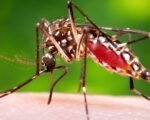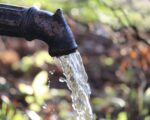Are you experiencing nasal symptoms such as a stuffy nose or runny nose and looking for natural relief using alternative medicine? By understanding the concept of acupuncture and its benefits for sinus relief, you can discover a whole new way to find comfort with alternative medicine.

Imagine being able to clear your sinuses without relying solely on medication or invasive procedures. With alternative medicine like acupuncture, you can find relief from runny nose and other nasal symptoms. By stimulating specific pressure points through acupuncture and massage, you can target the root cause of your sinus pain and experience much-needed relief. Alternative medicine techniques such as acupuncture and massage can help alleviate sinus pain by targeting specific pressure points. By stimulating these points, you can address the underlying cause of your discomfort and find relief. Additionally, examining the tongue is an important aspect of alternative medicine practices like acupuncture, as it can provide valuable insights into your overall health. Whether it’s pain relief for that persistent ache in your forehead or that stubborn spot that just won’t go away, acupuncture and sinus massage might hold the key to unlocking your comfort from a sinus infection.
So, let’s dive into this fascinating world of sinus pressure points and explore how massage can help relieve fluid buildup in a person’s sinuses. We’ll discuss how sinus cavities work, where they’re located, and how you can use simple techniques like sinus massage using your thumb or index fingers to stimulate these points effectively. This can help alleviate fluid buildup and provide relief for sinus conditions. Get ready to embark on a journey towards natural sinus relief with the help of acupressure points and the promotion of fluid movement!
Locations and Stimulation Techniques for Sinus Pressure Points
Sinus pressure can be a real pain, quite literally. The discomfort and congestion caused by sinus issues can make even the simplest tasks feel like a Herculean effort. However, knowing the right acupressure points can provide relief. But fear not! By targeting specific pressure points on your face and head, you can find relief from those stubborn sinuses. Let’s explore where these effective pressure points for sinus massage are located and learn various techniques to stimulate them for maximum effectiveness in relieving sinus conditions such as sinus infection.
Finding the Right Spots
To start off, it’s crucial to know where these magical sinus massage pressure points reside. Here are some key locations on your face and head that can provide much-needed relief:
-
Between the eyebrows: This point, also known as the “Third Eye,” lies just above the bridge of your nose where your eyebrows meet.
-
Underneath the cheekbones: Located along the lower edge of your cheekbones, these points can help alleviate sinus pressure in that area.
-
Alongside the nostrils: These points sit on both sides of your nostrils, just below where they meet your cheeks.
-
On either side of the nose: These points are situated near the outer edges of each nostril.
Stimulating Techniques for Maximum Effectiveness
Now that you’ve identified these vital sinus pressure points let’s dive into various techniques to stimulate them effectively:
-
Finger Pressure: Using gentle yet firm pressure, use your index or middle finger to apply circular motions or light taps on each point. Experiment with different levels of intensity to find what works best for you.
-
Massage: With clean hands or using essential oils such as eucalyptus or peppermint for added benefits, massage each point using small circular motions or upward strokes towards your temples.
-
Acupressure Tools: Utilize tools specifically designed for acupressure, such as rounded pens or handheld devices, to apply targeted pressure on these points. These tools can help you maintain consistent pressure without straining your fingers.
Finding the Right Pressure
While stimulating sinus pressure points, it’s vital to understand the correct amount of pressure to apply. Too much force can cause discomfort, while too little may not provide the desired relief. Remember these guidelines:
-
Start with gentle pressure and gradually increase it if needed.
-
Pay attention to your body’s response. If you experience pain or discomfort, reduce the pressure immediately.
-
Aim for a level of intensity that feels like a pleasant sensation rather than a painful one.
Different Techniques, Different Results
It’s fascinating how different stimulation techniques can yield various results when targeting sinus pressure points. Here’s what you need to know:
-
Immediate Relief: Certain techniques like finger pressure or massage might offer immediate relief by promoting better blood circulation and reducing inflammation in the sinuses.
-
Long-Term Benefits: Regular stimulation of these points through acupressure tools or massages can have long-term benefits by preventing future sinus issues and promoting overall well-being.
Remember, finding the right technique and applying consistent pressure is key to experiencing positive results.
9 Effective Pressure Points for Sinus Issues
Sinus problems can be incredibly uncomfortable, causing congestion, pain, and difficulty breathing. Luckily, there are specific pressure points that can provide relief from these issues. By understanding the location of each pressure point and its connection to sinus health, you can effectively alleviate congestion and pain. Let’s explore nine key areas that can help address your sinus symptoms.
-
Nose – The first pressure point we’ll discuss is located on both sides of the nose where it meets the cheeks. Applying gentle pressure to these points can help relieve sinus congestion and promote drainage.
-
Cheekbone – Moving down from the nose, you’ll find another effective pressure point on the cheekbones. This area is situated right below the eyes, at the top of your cheekbones. Stimulating these points can provide relief from facial pain caused by sinus inflammation.
-
Bottom of Nose – Directly under the tip of your nose lies another crucial pressure point for sinus issues. Applying gentle upward pressure in this area helps open up nasal passages and ease congestion.
-
Top of Nose – Continuing upwards from the bottom of your nose, you’ll find a key pressure point at the bridge between your eyebrows. Massaging this area gently with circular motions can help alleviate headaches associated with sinus problems.
-
Base of Skull – Moving away from the face, one effective pressure point for relieving sinus symptoms is located at the base of your skull where it meets your neck muscles. Applying firm but gentle pressure to this area can help reduce headache intensity and promote overall relaxation.
-
Sides of Nostrils – On either side of your nostrils are two more significant points that target nasal congestion directly. Massaging or pressing on these areas helps clear blocked sinuses and improve airflow.
-
Big Toe – Surprisingly, there is also a pressure point on your big toe that can provide relief from sinus issues. Located at the base of the nail bed, applying pressure to this point can help alleviate congestion and promote sinus drainage.
-
Cheeks – In addition to the pressure points near your nose, there are also effective points on your cheeks. These points are situated in line with the pupils of your eyes when you smile. Gently massaging these areas can help reduce facial pain caused by sinus inflammation.
-
Areas Around Eyes – Lastly, focusing on the areas around your eyes can also provide relief from sinus symptoms. Applying gentle pressure to the inner corners of your eyes and just below your eyebrows can help alleviate pain and reduce eye strain associated with sinus issues.
By targeting these specific pressure points, you can effectively manage your sinus problems naturally without relying solely on medication or invasive treatments. Experiment with different techniques such as massage, acupressure, or even using essential oils for added benefits. Remember to consult with a healthcare professional if you have any underlying medical conditions or concerns about trying these methods.
Using Acupressure to Clear Stuffy Sinuses
Sinus congestion can be a real nuisance, causing discomfort and interfering with our daily activities. While there are various remedies available, one effective and natural approach is acupressure. By applying gentle but firm pressure on specific points, you can promote drainage and relieve congestion in your sinuses.
Step-by-Step Instructions for Acupressure Techniques
To clear your stuffy sinuses using acupressure, follow these simple steps:
-
Locate the Facial Sinus Points: Begin by identifying the facial sinus points where you will apply pressure. These points include the bridge of your nose, the area between your eyebrows (known as the third eye point), and the hollows below your cheekbones.
-
Apply Pressure: Use your fingertips or thumbs to apply gentle but firm pressure on each of these points. Start with light pressure and gradually increase it as you feel comfortable.
-
Circular Motion: Apply circular motions while maintaining steady pressure on each point for about 30 seconds to a minute. This helps stimulate blood flow and promotes drainage in the sinuses.
-
Breathe Deeply: During an acupressure session, it’s essential to focus on proper breathing techniques for optimal results. Take slow, deep breaths as you apply pressure to help relax your body and enhance the effectiveness of the technique.
-
Repeat Regularly: To experience lasting relief from sinus congestion, make acupressure a regular practice. Aim for two to three sessions per day or whenever you feel congested.
The Benefits of Acupressure for Sinus Congestion
Acupressure offers several benefits when it comes to relieving sinus congestion:
-
Natural Relief: Unlike medications that may have side effects or cause drowsiness, acupressure provides a natural remedy without any adverse effects.
-
Promotes Drainage: By applying pressure on specific points, acupressure helps stimulate the flow of mucus and encourages drainage from the sinuses.
-
Relieves Congestion: Gentle pressure on the sinus points can help relieve congestion, allowing you to breathe more easily and comfortably.
-
Prevents Future Episodes: Regular practice of acupressure can strengthen your sinuses and prevent future episodes of stuffy noses or sinus infections.
Other Home Remedies for Sinus Congestion
In addition to acupressure, there are other home remedies you can try to alleviate sinus congestion:
-
Steam Inhalation: Inhaling steam from a bowl of hot water or using a humidifier can help moisten your nasal passages and reduce congestion.
-
Saline Nasal Rinse: Using a saline solution or nasal spray can provide relief by flushing out mucus and irritants from your nasal passages.
-
Warm Compresses: Applying warm compresses over your sinuses can help soothe inflammation and relieve congestion.
Remember, if your symptoms persist or worsen, it’s important to consult with a healthcare professional. Acupressure and home remedies are generally safe for most individuals but may not be suitable for everyone, especially those with underlying medical conditions or allergies.
Tips for Optimal Sinus Relief with Pressure Points
Enhancing the effectiveness of using pressure points for sinus relief goes beyond just applying pressure. By incorporating complementary practices and making lifestyle changes, you can maximize the benefits of this therapy and experience lasting relief from sinus pain.
Complementary Practices for Enhanced Results
While pressure points can provide significant sinus relief, combining them with other techniques can amplify their effects. Consider incorporating these complementary practices into your routine:
-
Steam Inhalation: Inhaling steam is a simple yet powerful way to clear your sinuses and reduce congestion. Fill a bowl with hot water, add a few drops of essential oils like eucalyptus or peppermint, and lean over it with a towel draped over your head. Breathe deeply for about 10 minutes to allow the steam to penetrate your nasal passages.
-
Nasal Irrigation: Nasal irrigation involves flushing out your sinuses with a saline solution. This practice helps remove excess mucus, allergens, and irritants from your nasal passages, providing instant relief. Use a neti pot or a squeeze bottle specifically designed for nasal irrigation.
-
Acupressure Massage: Alongside targeting specific pressure points, acupressure massage on the face and neck can stimulate blood flow and relieve sinus pain. Gently apply circular motions on your temples, bridge of the nose, cheekbones, and behind the ears.
Lifestyle Changes for Healthy Sinuses
In addition to utilizing pressure points therapy, adopting certain lifestyle changes can promote healthy sinuses and prevent recurring issues:
-
Stay Hydrated: Drinking plenty of water throughout the day helps keep your sinuses hydrated and prevents dryness that could lead to discomfort. Aim for at least eight glasses of water daily.
-
Maintain Clean Indoor Air: Minimize exposure to airborne allergens by regularly cleaning your living space and investing in air purifiers. Dusting surfaces, vacuuming frequently, and keeping windows closed during peak pollen seasons can significantly reduce sinus irritation.
-
Avoid Trigger Foods: Certain foods can trigger sinus inflammation and worsen symptoms. Limit your consumption of dairy products, processed foods, and spicy dishes. Opt for a diet rich in fruits, vegetables, whole grains, and lean proteins to support sinus health.
Self-Care Routines for Overall Well-Being
While focusing on sinus relief is essential, incorporating self-care routines that promote overall well-being can have a positive impact on your sinuses as well:
-
Regular Exercise: Engaging in regular physical activity not only boosts your immune system but also improves blood circulation throughout your body, including the sinuses. Aim for at least 30 minutes of moderate exercise most days of the week.
-
Stress Management: Stress can exacerbate sinus issues by weakening your immune system and increasing inflammation. Practice stress-reducing techniques such as deep breathing exercises, meditation, or yoga to keep stress levels in check.
-
Adequate Rest: Getting enough sleep allows your body to heal and regenerate properly. Aim for seven to eight hours of quality sleep each night to support optimal sinus health.
By following these tips and integrating complementary practices into your routine while utilizing pressure points therapy, you can achieve optimal sinus relief and experience long-lasting pain relief.
How to Target Specific Sinus Symptoms with Pressure Points
Relieving Headaches, Facial Pain, and Nasal Congestion
Finding relief can be a top priority. Understanding how different symptoms can be addressed by targeting specific pressure points is key. By focusing on the right pressure points, you can alleviate headaches, facial pain, and nasal congestion effectively.
Relieving Headaches
Headaches caused by sinusitis can be excruciating and debilitating. To target this symptom directly, there are several pressure points that prove to be highly effective:
-
Yintang: Located between the eyebrows, pressing this point gently with your index finger can help relieve frontal headaches.
-
Zan Zhu: Found at the inner end of the eyebrow ridge, applying firm pressure using your thumbs in an upward motion can provide relief from headaches that radiate across the forehead.
-
He Gu: Situated on the back of your hand between your thumb and index finger webbing, massaging this point in circular motions can alleviate both tension and sinus headaches.
Easing Facial Pain
Facial pain is another common symptom associated with sinus issues. By targeting specific pressure points on your face, you may experience significant relief:
-
Bi Tong: Located at the corner of each eye socket near the bridge of your nose, applying gentle pressure with your middle fingers can help ease facial pain caused by sinusitis.
-
Yingxiang: Positioned on either side of your nostrils where they meet your cheekbones, massaging these points in a circular motion with two fingers can provide relief from facial pain.
Alleviating Nasal Congestion
Nasal congestion is one of the most bothersome symptoms experienced during a sinus infection or allergy flare-up. Fortunately, there are effective pressure points that specifically target this issue:
-
Bitong: Situated on the outer edge of each nostril, applying firm pressure with your index fingers can help open up congested nasal passages.
-
Yingxiang: As mentioned earlier, massaging the Yingxiang points not only eases facial pain but also helps relieve nasal congestion.
Customizing Your Acupressure Routine
To maximize the benefits of acupressure for sinus symptoms, it’s essential to customize your routine based on your specific needs. Everyone experiences sinus issues differently, so tailoring your approach can lead to better results. Here are some tips for customizing your acupressure routine:
-
Identify your primary symptom: Determine whether headaches, facial pain, or nasal congestion is your most troublesome symptom.
-
Focus on relevant pressure points: Once you’ve identified your primary symptom, prioritize targeting the corresponding pressure points discussed earlier.
-
Combine multiple techniques: Experiment with different acupressure techniques such as gentle rubbing, circular motions, or firm pressure to find what works best for you.
-
Be consistent: Practice acupressure regularly to experience long-term relief from sinus symptoms.
Enhancing Sinus Health with Regular Acupressure Practice
Acupressure is a traditional medical practice that involves applying pressure to specific points on the body to stimulate healing and alleviate various ailments.Incorporating regular acupressure practice into your routine can offer long-term benefits and provide much-needed relief from sinus issues. By consistently stimulating the pressure points associated with sinuses, you can improve overall sinus health, reduce the frequency and severity of sinus problems, and experience lasting results.
Explore the long-term benefits of incorporating regular acupressure practice into your routine.
Regular acupressure practice offers numerous advantages for maintaining optimal sinus health in the long run. By dedicating time to this practice, you can effectively prevent and manage sinus-related problems such as congestion, headaches, and discomfort. Acupressure stimulates blood circulation, encourages lymphatic drainage, and promotes relaxation throughout the body. These combined effects help enhance the immune system’s response to infections or allergies that often contribute to sinus issues.
Learn how consistent stimulation of sinus pressure points can improve overall sinus health.
By targeting specific pressure points related to sinuses during an acupressure session, you can directly address any underlying imbalances or blockages within your nasal passages. Some key pressure points for sinuses include:
-
Yingxiang (LI20): Located on both sides of the nostrils where they meet the cheekbones.
-
Yintang (EX-HN3): Found between the eyebrows at the bridge of the nose.
-
Zan Zhu: Situated at the inner end of each eyebrow.
-
Taiyang (EX-HN5): Positioned in a depression at either temple area.
-
Shuai Gu (GB8): Located above each ear’s apex.
Consistent stimulation of these pressure points helps relieve congestion, reduce inflammation, and promote better sinus drainage. Regular practice can also alleviate tension in the facial muscles, which often contributes to sinus discomfort.
Discover how regular acupressure sessions can reduce the frequency and severity of sinus issues.
Regular acupressure sessions provide a proactive approach to managing sinus problems. By incorporating this practice into your routine, you can significantly decrease the frequency and severity of sinus-related symptoms. Acupressure helps regulate the flow of energy (Qi) within the body and promotes a balanced state. This equilibrium strengthens your body’s natural defenses against common triggers like allergies or infections that lead to sinus issues.
Understand the importance of maintaining a consistent practice to experience lasting results.
To experience lasting results and maximize the benefits of acupressure for sinuses, consistency is key. Incorporating this practice into your daily routine or at least several times a week is crucial for long-term improvement in sinus health. Consistency allows your body to adapt and respond positively to regular stimulation of pressure points associated with sinuses.
In addition to regular acupressure sessions, it’s important to maintain overall wellness practices such as staying hydrated, managing stress levels, and practicing good hygiene habits. These complementary measures work synergistically with acupressure to further enhance your sinus health.
Harnessing the Power of Pressure Points for Sinus Wellness
We discussed various techniques and locations for stimulating these pressure points, including acupressure. By targeting specific sinus symptoms with the right pressure points, you can find relief from congestion, headaches, and other discomforts.
Now that you have a better understanding of how pressure points can improve your sinus health, it’s time to put this knowledge into action. Start incorporating regular acupressure practice into your daily routine to enhance your overall well-being. Remember, consistency is key.
So why wait? Take control of your sinus wellness today by harnessing the power of pressure points. Your sinuses will thank you!
FAQs
[faq-schema id=”520″]







